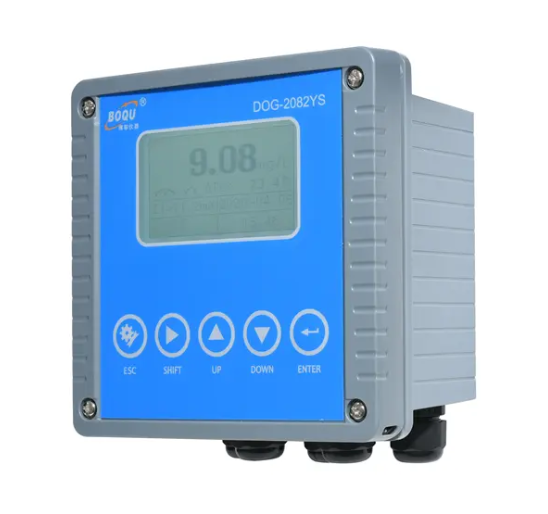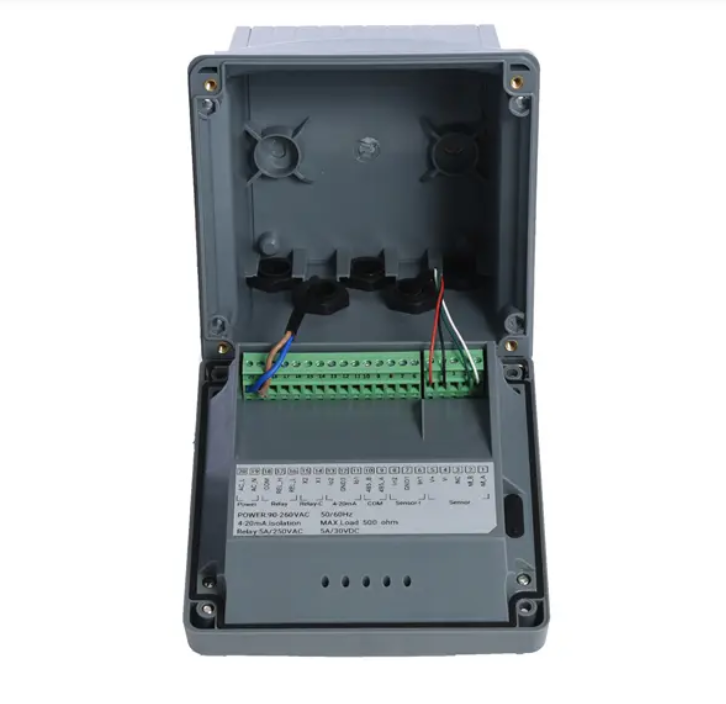How does an optical DO probe work? This blog will focus on how to use it and how to use it better, trying to bring you more useful content. If you are interested in this, a cup of coffee is enough time to read this blog!
What Is An Optical DO Probe?
Before knowing “How does an optical DO probe work?”, we need to have a clear understanding of what an optical DO probe is. What are DOs? What is an optical DO probe?
The following will introduce you in detail:
What is Dissolved Oxygen (DO)?
Dissolved oxygen (DO) is the amount of oxygen present in a liquid sample. It is critical for the survival of aquatic life and is an essential indicator of water quality.
What is an Optical DO Probe?
An optical DO probe is a device that uses luminescence technology to measure the DO levels in a liquid sample. It consists of a probe tip, a cable, and a meter. The probe tip contains a fluorescent dye that emits light when exposed to oxygen.
Advantages of Optical DO Probes:
Optical DO probes have several advantages over traditional electrochemical probes, including faster response time, lower maintenance requirements, and no interference from other gases in the liquid sample.
Applications of Optical DO Probes:
Optical DO probes are commonly used in industries such as wastewater treatment, aquaculture, and food and beverage production to monitor the DO levels in liquid samples. They are also used in research laboratories to study the effects of DO on aquatic life.
How Does An Optical DO Probe Work?
Here is a breakdown of the working process of an optical DO probe, using the DOG-2082YS model as an example:
Measuring Parameters:
The DOG-2082YS model measures the dissolved oxygen and temperature parameters in a liquid sample. It has a measuring range of 0~20.00 mg/L, 0~200.00 %, and -10.0~100.0℃ with an accuracy of ±1%FS.
The device is also equipped with a waterproof rate of IP65 and can operate in temperatures ranging from 0 to 100℃.
l Excitation:
The optical DO probe emits light from an LED onto a fluorescent dye in the probe tip.
l Luminescence:
The fluorescent dye emits light, which is measured by a photodetector in the probe tip. The intensity of the emitted light is proportional to the DO concentration in the liquid sample.
l Temperature Compensation:
The DO probe measures the temperature of the liquid sample and applies temperature compensation to the readings to ensure accuracy.
Calibration: The DO probe needs to be calibrated regularly to ensure accurate readings. Calibration involves exposing the probe to air-saturated water or a known DO standard and adjusting the meter accordingly.
l Output:
The DOG-2082YS model can be connected to a transmitter to display the measured data. It has a two-way analog output of 4-20mA, which can be configured and calibrated through the transmitter’s interface. The device is also equipped with a relay that can control functions such as digital communication.
In conclusion, the DOG-2082YS optical DO probe utilizes luminescence technology to measure dissolved oxygen levels in a liquid sample. The probe tip contains a fluorescent dye that is excited by light from an LED, and the intensity of the emitted light is proportional to the DO concentration in the sample.
Temperature compensation and regular calibration ensure accurate readings, and the device can be connected to a transmitter for data display and control functions.
Tips For Better Using Your Optical DO Probe:
How does an optical DO probe work better? Here are some tips:
Proper Calibration:
Regular calibration is essential to ensure accurate readings from the optical DO probe. Follow the manufacturer’s instructions for calibration procedures, and use certified DO standards to ensure accuracy.
Handle with Care:
Optical DO probes are delicate instruments and should be handled with care to avoid damage to the probe tip. Avoid dropping or hitting the probe tip against hard surfaces and store the probe properly when not in use.
Avoid Contamination:
Contamination can affect the accuracy of the DO readings. Ensure that the probe tip is clean and free from any debris or biological growth. If necessary, clean the probe tip with a soft brush or a cleaning solution recommended by the manufacturer.
Consider Temperature:
The DO readings can be affected by changes in temperature, and therefore, it’s crucial to consider temperature when using an optical DO probe. Allow the probe to equilibrate to the sample temperature before taking measurements, and ensure that the temperature compensation function is activated.
Use a Protective Sleeve:
Using a protective sleeve can help prevent damage to the probe tip and reduce the risk of contamination. The sleeve should be made of a material that is transparent to light, so it does not affect the readings.
Store Properly:
After use, store the optical DO probe in a cool, dry place, away from direct sunlight. Ensure that the probe tip is dry and clean before storing and follow the manufacturer’s instructions for long-term storage.
Some Don’ts While Using Your Optical DO Probe:
How does an optical DO probe work efficiently? Here are some “Don’ts” to keep in mind while using your Optical DO Probe, using the DOG-2082YS model as an example:
Avoid using the probe in extreme temperatures:
The DOG-2082YS optical DO probe can operate in temperatures from 0 to 100℃, but it’s important to avoid exposing the probe to temperatures outside of this range. Extreme temperatures can damage the probe and affect its accuracy.
Don’t use the probe in harsh environments without proper protection:
While the DOG-2082YS model optical DO probe has an IP65 waterproof rating, it’s still important to avoid using the probe in harsh environments without proper protection. Exposure to chemicals or other corrosive substances can damage the probe and affect its accuracy.
Don’t use the probe without proper calibration:
It’s important to calibrate the DOG-2082YS model optical DO probe before use and to recalibrate it regularly to ensure accurate readings. Skipping calibration can result in inaccurate readings and affect the quality of your data.
Final words:
I believe you now know the answers to: “How does an optical DO probe work?” and “How does an optical DO probe work better?”, right? If you want more detailed information, you can go to BOQU’s customer service team to get a real-time reply!
Post time: Mar-16-2023






